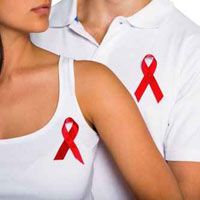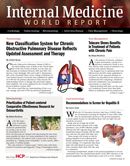Antiretroviral Therapy Effective at Preventing Transmission in HIV Divergent Couples
Among couples with an HIV-positive member, a study in the Cochrane Database of Systematic Reviews deemed antiretroviral therapy effective at preventing HIV transmission to the HIV-negative partner.

Cochrane Database of Systematic Reviews
Among couples with an HIV-positive member, a study in the (CDSR) deemed antiretroviral therapy (ART) effective at preventing HIV transmission to the HIV-negative partner.
To discern whether ART successfully inhibited HIV transmission from an infected person to an uninfected individual, Andrew Anglemyer, PhD, and his colleagues analyzed one random controlled trial (RCT) and 9 observational studies. The investigators specifically pinpointed studies that covered outcomes focused on HIV infection amongst couples, and cases where viral isolates between partners matched. Furthermore, the authors noted all index partners covered in studies had cell differentiation 4 (CD4) levels of 350—550 cells/µL.
While the investigators originally gathered 3,833 references for potential review, studies in which all “HIV-infected members of discordant couples are either all treated or all not treated,” letters, editorials, non-systematic reviews, case reports, case series, and cross-sectionals were eliminated from their review.
“The authors’ study objective was not to examine the effect of ART in serodiscordant couples but rather to estimate HIV incidence and clinical progression, quality of life and behavioural risk factors,” they wrote.
From their included studies, the researchers identified 2,112 incidents of HIV transmission between couples. These incidents occurred among 1,016 ART-treated couples and 1,096 untreated couples. Overall, the researchers found uninfected partners with an ART-treated partner had at worst a 40% decreased risk of being infected in comparison to a couple with an HIV-positive and untreated partner.
Despite limited information, the researchers conducted a subgroup analysis using 3 studies which centered on HIV transmission rate in couples by infected gender. For HIV-positive women, the investigators reported a non-significant reduced risk of transmission for women undergoing ART in contrast with untreated women (relative risk=0.39; 95%0.13—1.18). Similarly, the investigators noted an insignificant decrease in transmission for HIV-positive males compared to untreated males (relative risk=0.11; 95% CI 0.01–1.62).
Furthermore, the investigators subgroup analysis yielded a negligible association between income level and HIV prevention through ART.
“Specifically, the effect of ART on HIV prevention in low- and middle-income countries was estimated as RR=0.53 [95% CI 0.29, 0.97] with significant heterogeneity (I2=72%),” the writers noted. For high-income countries, “the effect of ART on HIV prevention was estimated as RR=0.77 [95% CI 0.33, 1.83] with low heterogeneity (I2=0%).”
While ART was found to be a viable prevention measure, the researchers still raised questions involving the longevity of protective measures, the adverse effects associated with early therapy implementation, long-term adherence to ARTs, and HIV strains resistant to ARTs. They also implored for an increased focus on resource accessibility and implementation challenges involving treatment.
“Counselling, support, and follow up, as well as mutual disclosure, may have a role in supporting adherence, so programmes should be designed with these components,” the writers concluded. “In addition to ART provision, the operational aspects of delivering such programmes must be considered.”

2 Commerce Drive
Cranbury, NJ 08512
All rights reserved.